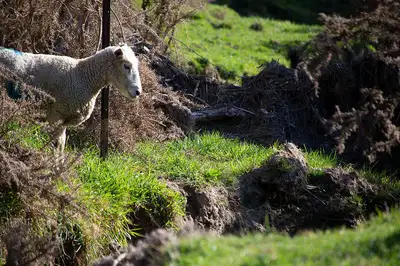
Dr Rene Corner-Thomas and PhD student Aloyce Bunyaga fixing one of the cameras used in the trial.
Massey researchers are looking into the behaviour of sheep around waterways and how this impacts on water quality across the seasons.
Project-lead Dr Rene Corner-Thomas, of the School of Agriculture and Environment, says that relatively little is known about the water intake behaviour of sheep in New Zealand.
“To date, there is little information about the ways in which sheep interact with waterways and the impact this might have on water quality. There are a few regional council reports, but little else. Sheep don’t actually need a lot of water. The grass they are eating can be as much as 80 per cent water, so they may be able to get all their water from pasture alone.
Interestingly, we have seen sheep going to troughs even if they aren’t drinking water, so maybe they do the same in waterways. We have found they actually head to the troughs even with the lids on, to do things like itching themselves.

A sheep involved in the trial.
Across the seasons
The study, made possible by LA Alexander Trust funding and Massey’s School of Agriculture and Environment, will be conducted across all four seasons, with the assistance of PhD student Aloyce Bunyaga.
It employs activity monitors, blue-tooth sensors and infrared cameras to record the interactions of sheep with waterways 24 hours a day. The water is concurrently measured for suspended sediment, E.coli, nitrates and phosphorous.
“With our focus on improving water quality, sheep and beef farmers have begun to fence waterways. We know the importance of doing this with cows, but we don’t have the information for sheep. It may be more cost-effective for farmers to use a single wire electric fence that will ensure that cattle are excluded but still allow sheep access.
“With the winter months completed, the study will continue across the seasons, but will require more research to extrapolate the results to a drier environment.”
Dr Corner-Thomas says they would also like include stream bank assessments through the use of drones, but this would be subject to funding.